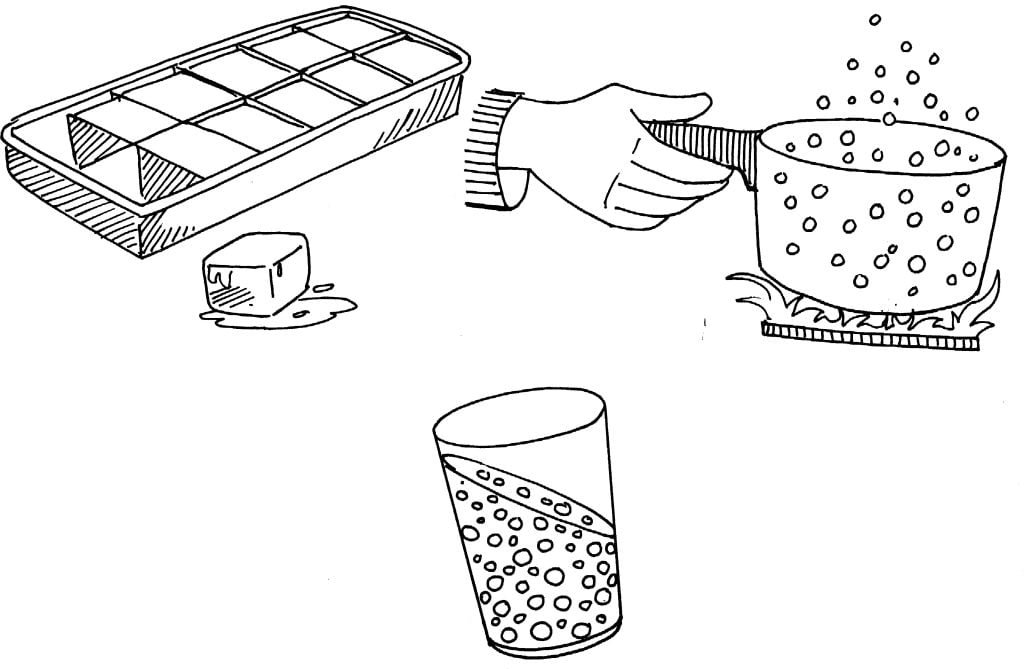
You can demonstrate the movement of molecules in solids, liquids and gases in a simple way.
Things Required:
A small box lid (or flat box with short sides)
Marbles (or any other small spheres or balls)
Scissors
Directions:
Place a layer of marbles or balls in the lid so that they may be jammed close together. Move the lid back and forth slowly. Now, take some of the marbles out of the lid and move the lid back and forth again, faster than you did when more marbles were in it.
Take more marbles out of the lid and move it at an even greater speed than before.
Finally, cut a hole in each side of the lid and shake the lid again and again.
This Is What Happens:
As the marbles get fewer and fewer, they spread out more easily. Some leave through the holes in the lid.

Science Behind It:
The “packed marbles” at the start show molecules in a solid substance. This explains why these substances are hard. They move, but they don’t move much. A number of marbles taken out shows molecules in a liquid. They are farther apart and they move more easily. Finally, the few marbles in the lid demonstrate molecules even farther apart and moving quite rapidly. This represents a gas. The holes in the sides of the box show what happens when substances break away from substances: water boiling on the stove will turn to water vapour, or steam, and leave the pot. A drop of water left in a dish will evaporate. If one of its molecules is moving fast enough, it will move from the surface of the drop and into the air. When an ice cube is heated, it changes from a solid form into a liquid state, and then into a gas. The molecules of water never change, but the forms the substance takes do change; for example, from ice to water to vapour.

